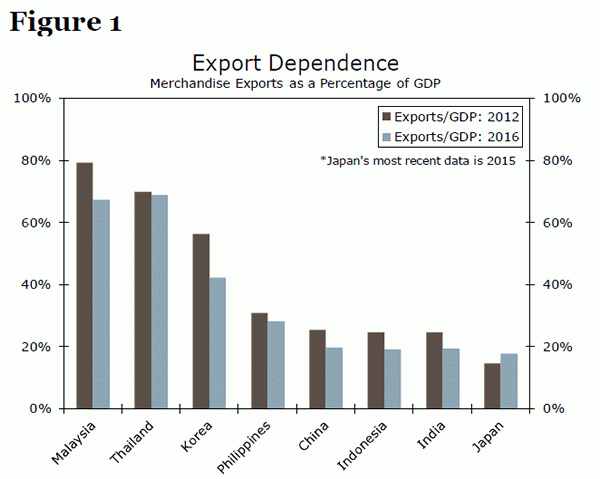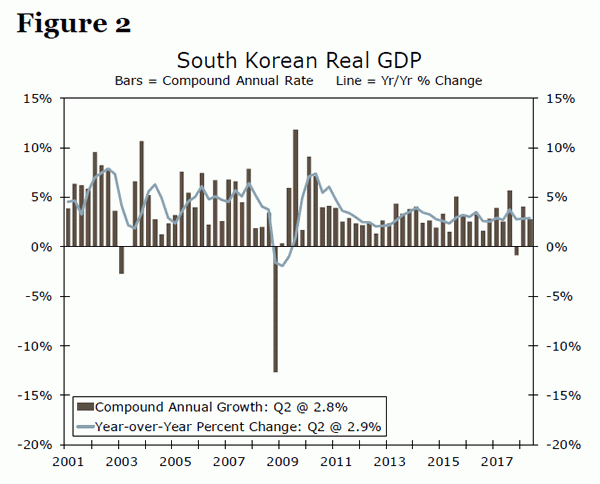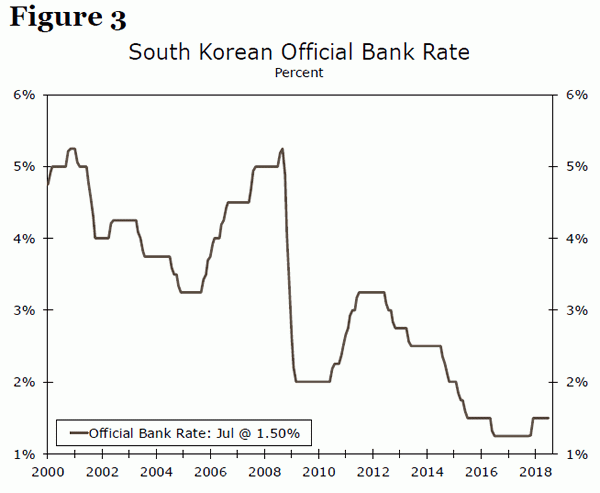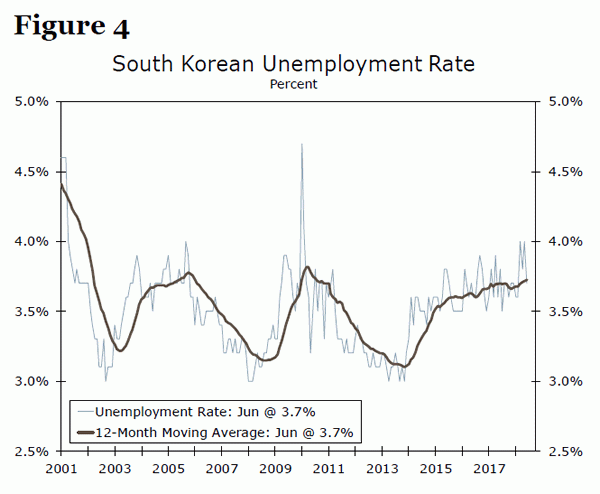After a mixed second quarter GDP report in South Korea, that nation’s central bank has to weigh rising pressure to normalize monetary policy against its vulnerability to global trade. In the early days of the coal industry, miners would bring a caged canary into the mine with them because, if the air were contaminated by methane or carbon monoxide, the bird would fall ill or die before levels became dangerous to the miners themselves. As worries mount about an incipient trade war, countries that are particularly reliant on exports can offer clues about the prospect for how trade is weighing on economic growth. One example of such a country is South Korea, where trade tensions are a major source of uncertainty as total exports as a share of GDP are more than 40 percent (Figure 1).
South Korea’s economy grew at an annualized rate of 2.8 percent in the second quarter (Figure 2), which was a bit slower than the growth rate in the prior quarter. Despite slowing on a sequential basis, the year-over-year rate picked up slightly to 2.9 percent, and perhaps more to the point, net exports offered a bigger boost to the headline growth rate than any other category.
Before we declare the world safe from the perils of a slowdown in trade, it bears noting that the boost from net exports actually has more to do with slowing imports (down 10.0 percent at an annualized rate) than a surge in exports (which actually slowed substantially from the prior period and only grew at a 3.2 percent clip). For another data point, consider Singapore, an even more export-reliant economy, where growth slowed in the second quarter as well.
Other Areas of Growth and Outlook for Bank of Korea
Business investment slowed in South Korea in the second quarter after a strong Q1, but other than that all major categories were in expansion mode during the period. Consumer spending advanced at 1.7 percent annualized rate and inventories increased a bit more than they did in the first quarter, resulting in a slight boost to headline growth.
At its most recent policy meeting in July, the Bank of Korea (BoK) held its policy rate steady (Figure 3) and downgraded its 2018 growth projection to 2.9 percent from 3.0 percent previously, citing corporate earnings and trade tensions as causes for the adjustment. Our own forecast for full year 2018 GDP growth in Korea is 2.7 percent.
With inflation in check and unemployment still somewhat high for structural reasons (Figure 4), economic conditions are not yet completely supportive of less policy accommodation. But that did not prevent one policymaker from dissenting at the July meeting, an indication that there is at least some pressure to hike rates as many other central banks are on a path toward normalization.
Although our baseline expectation is that the BoK will not raise rates at its next meeting on August 31, there is a case to be made that a hike is in the offing. The sole dissent in July came from Lee Il-houng, who as it happens was a sole dissent in October of last year (also favoring a hike), before the BoK went ahead with a 25 basis point hike the following month. In our view, the worries about global trade offset the less-than-compelling case to raise rates. Should those tensions abate, the odds of a hike go up.

















